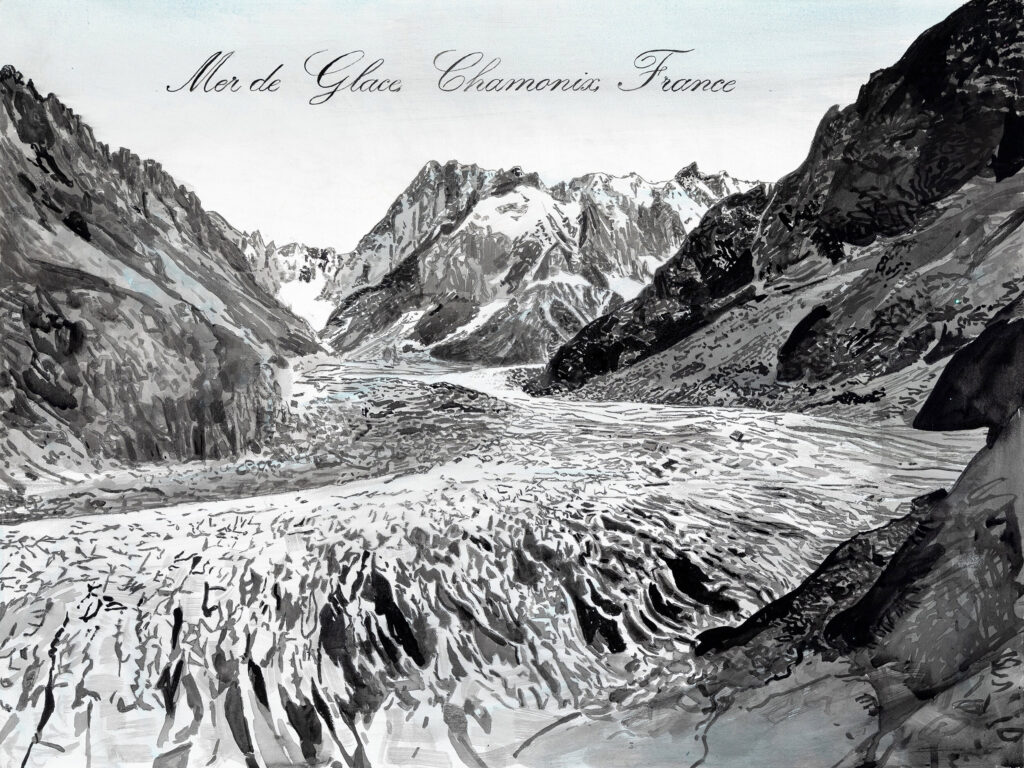Chamonix, France
Melting

My first time on the Mer de Glace was guided climbing on the classic route Arête Cosmiques, named for the cosmic research hut/shelter at the base of the ridge leading back to the Aigulle de Midi telepherique (one of the main mechanical access points to the Mount Blanc massif). It’s an outstanding if low-key initiation to the range. I suspected at the time that it’s how guides determine if their clients are truly dedicated to precipitating them from the hill. It’s an interesting mix of snow, ice and rock, requires ropes, ice axes and crampons. It depends a lot on ‘conditions’ or amounts and quality of snow and ice. It is often a highway of those unexploded devices known as guided climbers. Interestingly it’s a bit tougher when snow is low, so there you go. The next time I recall being there was a ski tour to the Italian side, past the Dent de Geant, from the Midi. Skiing down to the bottom of the moraine in the early 21st century there were many signs of the glacier’s recession. The most ominous metric is at the foot, where iron rungs have been driven into the escarpments below the Montenvers railway stop, and need to be extended down annually. The ladder which tourists, climbers and skiers use to get from the railway to and from the glacier has extended to hundreds of meters in the recent recession. Perhaps an unanticipated change in the earth’s climate will lead to the restoration of this and other giants, but probably not in my life’s time. I’ll never forget venturing onto the fairly bare foot with my wife and very young son, entranced by blue ice caves which intimated sublime colors and spaces likely unique in the world. Thomas C.
The Mer de Glace (Sea of Ice) is the largest glacier in France, 7km long and 200m deep, and is one of the biggest attractions in the Chamonix Valley. The glacier was once easily visible from the town of Chamonix but has been shrinking and is now barely visible from below. From 1939 to 2001 the surface of the glacier has lowered an average of 30 cm each year, corresponding to an equivalent loss of 700 million cubic meters of water. The painting is based on an old uncredited postcard image.
No. 74